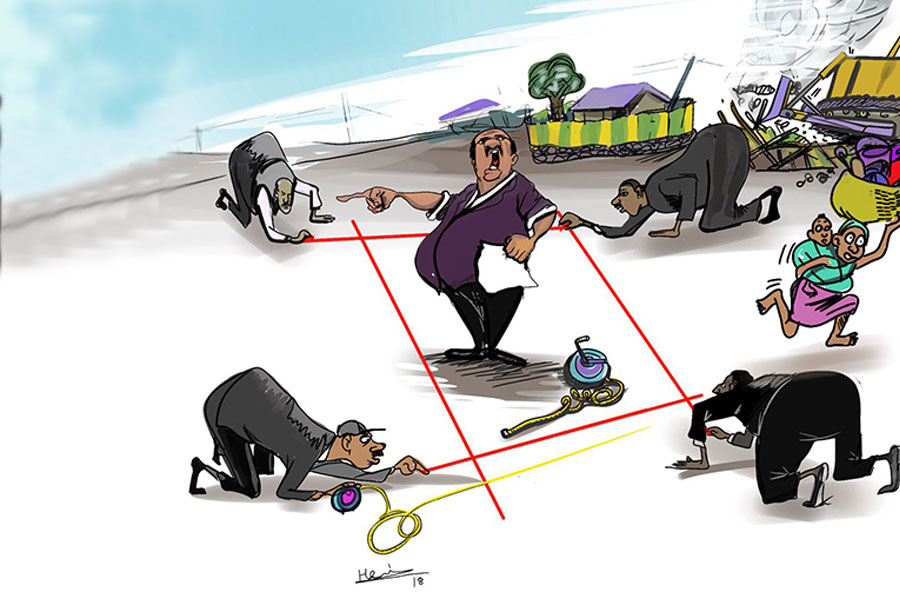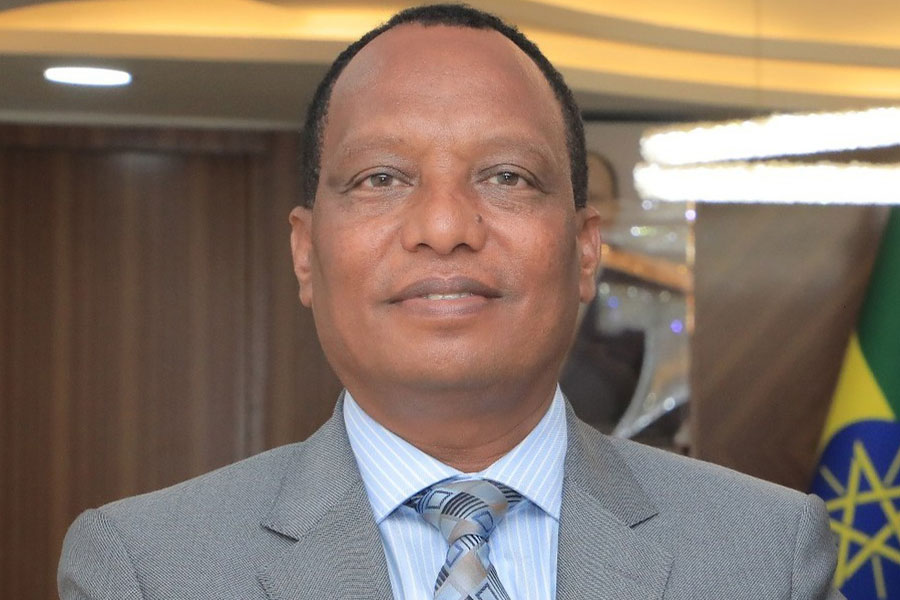
Commentaries | Jun 01,2024
Feb 1 , 2020
By Eskinder Kebede
In all of the talk about growing human capital, an issue that gets almost no attention is that of children's programming, writes Eskinder Kebede (eskinder.kebe1996@gmail.com), managing director at Ye Ethiopia Lijioch.
Brain scientists say that sound is the fastest shortcut to distant memories. But sight must be even faster, because nothing takes us back down memory lane like catching a TV programme we loved as a kid.
Since television became a mass medium in the 1960s, children’s TV has been a key part of the schedule, fulfilling – on the BBC at least – a mission to inform, educate and entertain. Obviously, it was the “entertain” bit that appealed to the kids.
But we must not underestimate the importance of early childhood education on the intellectual development of future generations. UNESCO argues that the first eight years of life are critical for brain development and advocates for early education that promotes health and nutrition.
Studies have shown that children who watch educational television programming benefit from increased cognitive capacity, improved preparedness for school and enhanced social skills.
Sesame Street has been at the forefront of children’s programming for over forty years in the United States and has made some of its popular characters – Elmo, the Cookie Monster and Big Bird – household names. However, more than a form of entertainment, Sesame Street serves as an educational tool. The show is famous for its catchy songs and clever plots embedded with educational messages, teaching children the alphabet, the importance of sharing, how to cope with grief and countless other social messages, all the while keeping children engaged. Sesame Street has provided children with a valuable supplement to preschool education.
Video and film combine motion, colour and sound in ways that can promote creative ideas better than any other medium. As a result, it helps children develop cognitive, motor and interpersonal development.
The history of children’s television can be traced back to the 1950s, which was concentrated on Sunday morning cartoons. November 10, 1969, was the debut of Sesame Street, a children’s show about a fictional street in New York where humans and Muppet’s meet.
Mr. Roger’s Neighborhood was also one of the first children’s television shows. The show helped young children understand life and how to interact with new friends and new people. The show’s creator, Fred Rogers, even famously went before congress and advocated for more federal money to support the Public Broadcasting Service (PBS).
But the first cable channel dedicated to children came in 1977 and was known as Nickelodeon. By 2018, the channel was available to over 87 million households in the United States.
Further support came in 1990 in the US when Congress enacted the Children’s Television Act (CTA) to increase the amount of educational and informational programmes for children available on television. The act stipulates that there had to be public information to give parents more details on the educational values of the shows. It stressed the educational and informational needs of children‘s television.
As in almost every field, Ethiopia has lagged behind, but we are slowly catching up. But this progress can only go so far without private sector, public and government engagement.
The last couple of decades have seen the proliferation of multiple regional channels broadcasting in various languages. The first privately run Tv channel might have come in the late 2000s but it is since 2016 that the country saw an explosion in competition.
Despite this, there was no channel dedicated to children’s programming until Ye Ethiopia Lijioch(Ethiopian Children‘s Television). The channel was established to provide entertainment, educational and informative television programmes. The channel targets not only Ethiopian citizens who reside in the country but children of the diaspora with its 24 hours of programming.
The channel includes children's plays, music and songs, question and answer competitions, puppet shows, dramas, films, book readings and storytelling with characters.
This is a big step forward given Ethiopia’s ambitions to grow human capital. But this task will not be attained by only one institution’s efforts but also needs a concerted effort by the relevant stakeholders. Fortunately, there are regional and international conventions that Ethiopia is a party to that can serve as a foundation. These include the Convention on the Rights of Children (CRC) and the African Charter on the Rights & Welfare of Children.
An article in the former stipulates that a child has the right to reliable information from the media. Mass media such as television, radio and newspapers should provide information that children can understand and should not promote materials that could harm them.
The article in CRC also emphasises that mass media provide content and material that fosters the social and cultural lives of children. It also indicates that content for children should be published and distributed to engender national and international cooperation. It is also maintained that the publication and distribution of children's books must be encouraged. This entails that children have the right to access informative and entertaining material.
The African Charter also includes various articles that support mass media - both in electronic and print form - in providing information and entertaining content or productions that children can understand. State parties are instructed to recognise the right of the child to rest and leisure, to engage in play and recreational activities appropriate to the age of the child and to participate freely in cultural life and the arts.
“States Parties shall respect and promote the right of the child to fully participate in cultural and artistic life and shall encourage the provision of appropriate and equal opportunities for cultural, artistic, recreational and leisure activity,” it is also stated.
These articles underscore the need to give due attention to children's programming so that they receive quality material and content for the full and harmonious development of their personalities.
A great deal of work has to be done to meet the responsibilities we have to children in Ethiopia. Of course, this is not to say that there has been no effort until theYe EthiopiaLijochchannel. In fact, there is a need to build on previous achievements.
Ethiopian Television started the children's television show Ye lijoch Geize(Children’s Time) a year after it was established in 1965. It was hosted by Ababa Tesfaye – aka Tesfaye Sahlu - an iconic storyteller for more than two generations.
More recently, Tsehaye Memar Tewedalech and Ethiopis – both private initiatives – have contributed a lot in this regard to filling the gap in children's programming. However, there are too few children's television shows in the nation compared to the need. Even those children's television shows, which are being aired by the mainstream media outlets, lack proper attention and support.
Ethiopian children require informative, educational and entertaining programming of excellent quality in their home language that is explicitly aimed at addressing their needs and instilling a sense of pride in their country. These needs vary according to the circumstances and ages of children from pre-school to adolescence.
As many teachers and parents attest, speaking directly about values and traits is generally much less effective than using powerful stories and examples that show the merits and consequences of the particular value or trait. Contextualising can make a tremendous difference in how children absorb and internalise knowledge.
This form of children's programming will be all the more important as Ethiopia tries to grow its human capital, 43pc of which are under the age of 14.
PUBLISHED ON
Feb 01,2020 [ VOL
20 , NO
1031]


Commentaries | Jun 01,2024

Radar | Nov 20,2023

Fortune News | Jan 07,2023

Fortune News | Jun 25,2022

Editorial | Oct 26,2019

Commentaries | Oct 16,2024

Life Matters | Apr 26,2025

Radar | Jul 06,2025

Fortune News | Jul 29,2023

Radar | Nov 20,2023

Photo Gallery | 174643 Views | May 06,2019

Photo Gallery | 164867 Views | Apr 26,2019

Photo Gallery | 155079 Views | Oct 06,2021

My Opinion | 136699 Views | Aug 14,2021
Editorial | Oct 11,2025

Dec 22 , 2024 . By TIZITA SHEWAFERAW
Charged with transforming colossal state-owned enterprises into modern and competitiv...

Aug 18 , 2024 . By AKSAH ITALO
Although predictable Yonas Zerihun's job in the ride-hailing service is not immune to...

Jul 28 , 2024 . By TIZITA SHEWAFERAW
Unhabitual, perhaps too many, Samuel Gebreyohannes, 38, used to occasionally enjoy a couple of beers at breakfast. However, he recently swit...

Jul 13 , 2024 . By AKSAH ITALO
Investors who rely on tractors, trucks, and field vehicles for commuting, transporting commodities, and f...

Oct 11 , 2025
Ladislas Farago, a roving Associated Press (AP) correspondent, arrived in Ethiopia in...

Oct 4 , 2025
Eyob Tekalegn (PhD) had been in the Governor's chair for only weeks when, on Septembe...

Sep 27 , 2025
Four years into an experiment with “shock therapy” in education, the national moo...

Sep 20 , 2025
Getachew Reda's return to the national stage was always going to stir attention. Once...

Oct 12 , 2025
Tomato prices in Addis Abeba have surged to unprecedented levels, with retail stands charging between 85 Br and 140 Br a kilo, nearly triple...

Oct 12 , 2025 . By BEZAWIT HULUAGER
A sweeping change in the vehicle licensing system has tilted the scales in favour of electric vehicle (EV...

A simmering dispute between the legal profession and the federal government is nearing a breaking point,...

Oct 12 , 2025 . By NAHOM AYELE
A violent storm that ripped through the flower belt of Bishoftu (Debreziet), 45Km east of the capital, in...